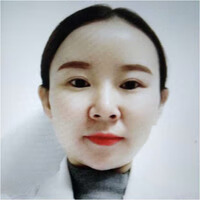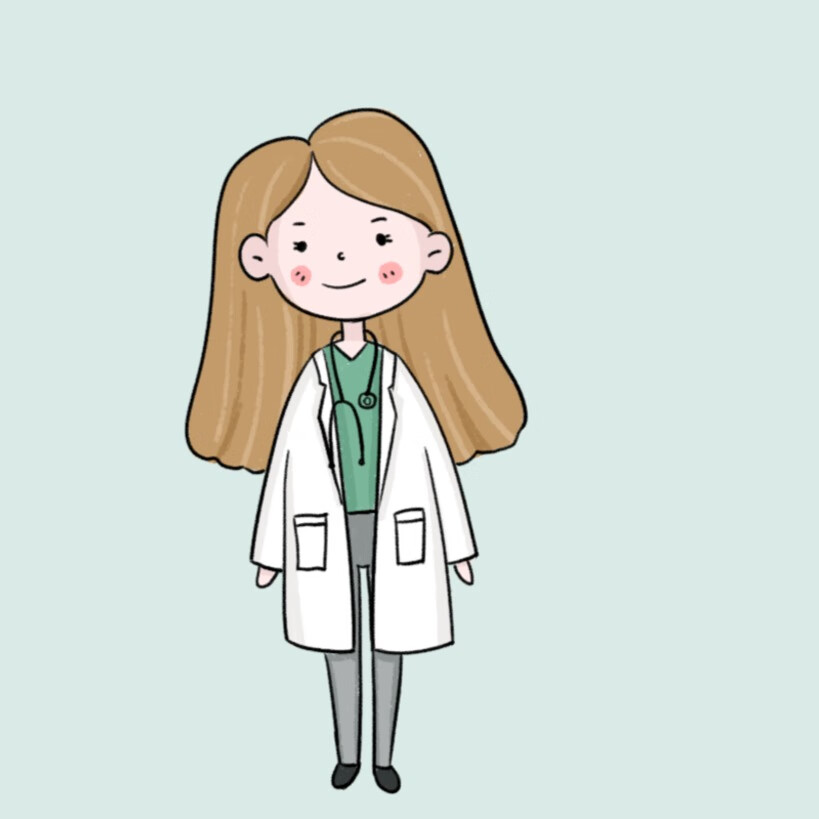霰粒肿 vs 麦粒肿
Hordeolum是一种在眼睑中发现的急性细菌感染。[1]这种感染是一种常见疾病,患者经常到他们的初级保健医生或急性护理中心进行评估和治疗。[2]患者通常表现为眼睑疼痛性红斑性炎症。麦粒体可以在外眼睑上形成,通常被称为麦粒肿。它也可能在内眼睑上形成,很容易被误认为是霰粒肿。[3]这种情况通常持续一到两周,是自限性的,并且经常自行消退。可以用热敷和按摩疗法治疗。可能需要局部使用抗生素,在极少数情况下,脓疱可能需要引流。[3]
病因学
它通常是由感染睫毛毛囊的葡萄球菌引起的。外部麦粒肿是由皮脂腺(蔡司)腺或汗腺(毛细胞)腺的阻塞引起的。[4]阻塞发生在睫毛线处,表现为疼痛的红色肿胀区域,发展成脓疱。内部麦粒肿是由睑板腺阻塞引起的,脓疱在眼睑的内表面形成。[3] Hordeola可能同时出现在上眼睑和下眼睑上。[4]
流行病学
Hordeolum是家庭实践和急性护理环境中的常见表现。[2]种族,性别或性别与大麦病流行率之间没有直接相关性。由于皮脂粘度增加,成人可能更容易患病。患有睑缘炎,脂溢性皮炎,酒渣鼻,糖尿病和脂质升高等疾病的患者也面临发生群淋巴细胞的风险增加。[3]
病理 生理
感染是由于蔡司、摩尔或睑板腺分泌物增厚、干燥或淤滞引起的。蔡司和莫尔腺是眼睛的睫状体。蔡司腺分泌具有防腐特性的皮脂,可以防止细菌的生长。[2]摩尔腺产生免疫球蛋白A,粘蛋白1和溶酶体,这对于免疫防御眼睛中的细菌至关重要。[5]当这些腺体堵塞或阻塞时,眼睛防御就会受损。淤滞可导致细菌感染,金黄色葡萄球菌是最常见的病原体。[4]在白细胞浸润发生局部炎症反应后,会出现化脓性口袋或脓肿。
历史和物理
仔细的病史和体格检查至关重要。患者通常会缓慢而隐匿地出现疼痛、发红和肿胀的眼睑,无异物或外伤史。如果麦粒肿的大小压在角膜上,视力可能会受到影响。患者不应报告眼痛,眼外运动应完整无痛。红斑局限于患眼睑。提供者应尝试定位脓疱,并且可能需要切除眼睑部分局限影响引流形成纤维包膜,特别是定位内部的麦粒肿。提供者应询问麦粒肿的任何诱发性疾病,这些疾病应在治疗中得到解决。眼球运动伴眶周肿胀和红斑的任何疼痛均提示眼眶蜂窝织炎,需要额外和更积极的管理和治疗。眼部持续或复发性疼痛肿块可能提示癌,需要活检。在这些情况下需要转诊眼科。[2][6][3]
评估
通常,没有与麦粒肿相关的诊断性检查,这是一种临床诊断。在极少数情况下,如果发生并发症,并且感染扩散并导致眶周或眼眶蜂窝织炎,则需要额外的检查和影像学检查。有时,内部麦粒肿会引起角膜刺激,在这种情况下,提供者可能会用荧光素染色眼睛,以确保没有角膜擦伤。[2]
治疗/管理
在许多情况下,病变可以在没有任何治疗的情况下自发引流。热敷也是有益的,按摩该区域也是如此。热敷的目的是软化肉芽肿组织并促进引流。迄今为止,还没有结论性研究表明,仅这种方法就会导致持续时间缩短或结局改善。眼睑按摩旨在帮助表达受感染腺体的脓性引流。使用无泪且 PH 平衡的生理盐水或温和不刺激角膜的洗面奶(例如婴儿洗面奶)进行眼睑清洁,可通过清除堵塞导管中的碎屑来促进排出。肥皂还可通过分解细胞膜来帮助去除细菌,它还可以治疗外部麦粒肿的根本原因,睑缘炎。[1]应特别注意挤压和按摩内部麦粒肿,因为这可能会导致角膜刺激或变形。[7]
持续性病变或较大病变可能需要抗生素治疗。这种治疗可能有助于缩短持续时间和严重程度。经常使用大环内酯类抗生素眼膏,如红霉素眼药膏,并具有润滑的额外好处。如果肿胀明显并对角膜造成压力,则可以短期使用局部类固醇。[8]如果感染扩散并进展为眶周或眼眶蜂窝织炎,则需要全身性抗生素。[2]持续性脓肿的切口和引流可能是必要的。[9]眼科医生应在局部麻醉下进行切口和引流。应将标本送往病理学,以排除更严重的疾病,包括癌症。
鉴别诊断
基底细胞癌
霰粒肿
气肿-眼眶(罕见)
前期蜂窝织炎
皮脂腺癌
鳞状细胞癌
形成颗粒和其他问题
虽然麦粒肿是一种常见的表现,但医生应确保在评估和治疗期间考虑并排除红眼皮疼痛的其他表现。其他应考虑的诊断包括眶周和眼眶蜂窝织炎、霰粒肿、皮脂腺癌和鳞状细胞癌。[6]提供者还应考虑可能导致群病复发的根本原因,如睑缘炎和酒渣鼻。应解决这些基础疾病,以防止这些患者群体中麦粒肿复发。[10]
霰粒肿可以模仿内部的Hordeolum,起初可能很难区分两者。霰粒肿在眼睑中间的皮脂腺周围形成。它是由腺体中泄漏到周围组织的分泌物分解形成的。最初,炎症可能产生疼痛,并可能表现为内部麦粒肿。然而,霰粒肿发展为无痛肉芽肿性结节,被认为是无菌性慢性炎症。[8]
提高医疗团队的成果
Hordeolum经常由急诊医生,执业护士或初级保健提供者遇到。在大多数情况下,感染可以通过保守治疗来控制。热敷的目的是软化肉芽肿组织并促进引流。持续性病变或较大病变可能需要抗生素治疗。这种治疗可能有助于缩短持续时间和严重程度。但是,如果感染量较大或病因不明,应将患者转诊至眼科医生处。[9]眼科医生应在局部麻醉下进行切口和引流。应将标本送往病理学,以排除更严重的疾病,包括癌症。
对于大多数大麦病患者,结果非常好。
A hordeolum is an acute, common bacterial infection of the eyelid. Patients with this condition often present to their primary care provider with painful, erythematous inflammation of the eyelid. This activity illustrates the evaluation and treatment of hordeolum and reviews the role of the professional team in managing patients with this condition.
Objectives:
Describe the typical clinical presentation of a hordeolum.
Review the pathophysiology of hordeolum.
Summarize the use of warm compresses, lid massage, and lid scrubs in the management of hordeolum.
Identify the importance of improving care coordination among the interprofessional team to improve outcomes for patients affected with hordeolum.
Access free multiple choice questions on this topic.
Introduction
A hordeolum is an acute bacterial infection found in the lid of the eye.[1] This infection is a common condition, and patients often present to their primary care physician or acute care center for evaluation and treatment.[2] The patient usually presents with painful, erythematous inflammation of the eyelid. The hordeolum can form on the external eyelid and is referred to commonly as a stye. It may also form on the inner eyelid and can be easily mistaken for a chalazion.[3] The condition often lasts one to two weeks, is self-limiting, and often resolves on its own. It may be treated with warm compresses and massage therapy. Topical antibiotics may be indicated, and in rare cases, the pustule may require drainage.[3]
Etiology
It is usually caused by Staphylococcus that infects the eyelash hair follicle. The external hordeolum is caused by a blockage of the sebaceous (Zeis) glands or sweat (Moll) glands.[4] The blockage occurs at the lash line and presents as a painful red swollen area that develops into a pustule. The internal hordeolum is caused by a blockage of the Meibomian glands, and the pustule forms on the inner surface of the eyelids.[3] Hordeola may present on both the upper and the lower eyelids.[4]
Epidemiology
Hordeolum is a common presentation in family practice and acute care settings.[2] There is no direct correlation between race, sex, or gender with regards to hordeolum prevalence. Adults may be more prone due to the increased viscosity of the sebum. Patients with conditions such as blepharitis, seborrheic dermatitis, rosacea, diabetes, and elevated lipids are also at increased risk for the development of hordeola.[3]
Pathophysiology
The infection occurs due to thickening, drying, or stasis of the Zeis, Moll, or Meibomian gland secretions. The Zeis and Moll glands are the ciliary glands of the eye. The Zeis gland secretes sebum with antiseptic properties that may prevent the growth of bacteria.[2] The Moll gland produces immunoglobulin A, mucin 1, and lysosomes which are essential in the immune defense against bacteria in the eye.[5] When these glands become clogged or blocked, the eye defenses are impaired. The stasis can lead to bacterial infection with Staphylococcus aureus being the most common pathogen.[4] After a localized inflammatory response occurs with infiltration by leukocytes, a purulent pocket or abscess develops.
History and Physical
A careful history of and physical exam is essential. The patient will usually relay a slow and insidious onset of a painful, red, and swollen eyelid without a history of foreign body or trauma. Visual acuity may be affected if the size of the hordeolum is pressing on the cornea. The patient should not report ocular pain, and their extraocular movements should be intact and painless. The erythema is localized to the lid of the affected eye. The provider should try to locate a pustule, and the eyelids may need to be everted, especially to locate an internal hordeolum. The provider should inquire about any of the predisposing conditions for hordeolum, and these conditions should be addressed and managed in treatment. Any pain in ocular movements with periorbital swelling and erythema is indicative of orbital cellulitis and requires additional and more aggressive management and treatment. Persistent or recurrent painful lumps in the eye may be indicative of carcinoma and require biopsy. Ophthalmology referral is indicated in these situations.[2][6][3]
Evaluation
Typically, there is no diagnostic testing associated with a hordeolum, and it is a clinical diagnosis. Rarely, additional testing and imaging will be required if complications occur, and the infection spreads and causes periorbital or orbital cellulitis. Occasionally, an internal hordeolum can cause corneal irritation, in which case the provider may stain the eye with fluorescein to ensure there is no corneal abrasion.[2]
Treatment / Management
In many cases, the lesions can spontaneously drain without any treatment. Warm compresses are also of benefit, as is massage to the area. These are often seen as the gold standard. Warm compresses are aimed at softening the granulomatous tissue and facilitating drainage. There are no conclusive studies to date, showing that this method alone causes any shortened durations or improved outcomes. Lid massage is intended to help express the purulent drainage from the infected gland. Lid scrubs with saline or mild shampoo (e.g., baby shampoo) that is tear-free and ph-balanced, may promote drainage by clearing debris from the clogged duct. Soap may also help to remove bacteria by breaking down cell membranes, and it may also treat an underlying cause of the external hordeolum, blepharitis.[1] Careful attention should be paid to compresses and massage for the internal hordeolum, as this could cause irritation or deformation to the cornea.[7]
Persistent lesions or larger lesions may require antibiotic therapy. This treatment may help to shorten duration and severity. A macrolide antibiotic ointment such as erythromycin ophthalmic ointment is often used and has the added benefit of lubrication. If the swelling is significant and causing pressure on the cornea, topical steroids can be used for a short duration.[8] If the infection spreads and progresses to a periorbital or orbital cellulitis, systemic antibiotics are required.[2] Incision and drainage of a persistent abscess may be necessary.[9] An ophthalmologist should perform the incision and drainage under local anesthesia. The specimen should be sent to pathology to rule out more serious diseases, including carcinoma.
Differential Diagnosis
Basal cell carcinoma
Chalazion
Pneumo-Orbita(rare)
Preseptal cellulitis
Sebaceous gland carcinoma
Squamous cell carcinoma
Pearls and Other Issues
While hordeolum is a common presentation, the practitioner should ensure that other manifestations of a painful red eyelid are considered and ruled out during evaluation and treatment. Other diagnoses that should be considered are periorbital and orbital cellulitis, chalazion, sebaceous gland carcinoma, and squamous cell carcinoma.[6] The provider should also consider underlying causes that can lead to a reoccurrence of hordeola such as blepharitis and rosacea. These underlying conditions should be addressed to prevent recurrent hordeolum in these patient populations.[10]
A chalazion can mimic an internal hordeolum, and it may be difficult to distinguish between the two at first. The chalazion forms around the sebaceous gland in the middle of the eyelid. It forms from the breakdown of the secretions in the gland that leak into the surrounding tissues. Initially, the inflammation may produce pain and may present as an internal hordeolum. However, the chalazion develops into a painless granulomatous nodule and is considered an aseptic, chronic inflammation.[8]
Enhancing Healthcare Team Outcomes
Hordeolum is often encountered by the emergency physician, nurse practitioner, or primary care provider. In most cases, the infection can be managed with conservative treatment. Warm compresses are aimed at softening the granulomatous tissue and facilitating drainage. Persistent lesions or larger lesions may require antibiotic therapy. This treatment may help to shorten duration and severity. However, if the infection is large or the cause is not known, the patient should be referred to an ophthalmologist.[9] An ophthalmologist should perform the incision and drainage under local anesthesia. The specimen should be sent to pathology to rule out more serious diseases, including carcinoma.
The outcomes for most patients with hordeolum is excellent.
Review Questions
References
1.Lindsley K, Nichols JJ, Dickersin K. Non-surgical interventions for acute internal hordeolum. Cochrane Database Syst Rev. 2017 Jan 09;1:CD007742. [PMC free article] [PubMed]
2.Pflipsen M, Massaquoi M, Wolf S. Evaluation of the Painful Eye. Am Fam Physician. 2016 Jun 15;93(12):991-8. [PubMed]
3.McAlinden C, González-Andrades M, Skiadaresi E. Hordeolum: Acute abscess within an eyelid sebaceous gland. Cleve Clin J Med. 2016 May;83(5):332-4. [PubMed]
4.Wald ER. Periorbital and orbital infections. Pediatr Rev. 2004 Sep;25(9):312-20. [PubMed]
5.Takahashi Y, Watanabe A, Matsuda H, Nakamura Y, Nakano T, Asamoto K, Ikeda H, Kakizaki H. Anatomy of secretory glands in the eyelid and conjunctiva: a photographic review. Ophthalmic Plast Reconstr Surg. 2013 May-Jun;29(3):215-9. [PubMed]
6.Carlisle RT, Digiovanni J. Differential Diagnosis of the Swollen Red Eyelid. Am Fam Physician. 2015 Jul 15;92(2):106-12. [PubMed]
7.McMonnies CW, Korb DR, Blackie CA. The role of heat in rubbing and massage-related corneal deformation. Cont Lens Anterior Eye. 2012 Aug;35(4):148-54. [PubMed]
8.Jin KW, Shin YJ, Hyon JY. Effects of chalazia on corneal astigmatism : Large-sized chalazia in middle upper eyelids compress the cornea and induce the corneal astigmatism. BMC Ophthalmol. 2017 Mar 31;17(1):36. [PMC free article] [PubMed]
9.Hirunwiwatkul P, Wachirasereechai K. Effectiveness of combined antibiotic ophthalmic solution in the treatment of hordeolum after incision and curettage: a randomized, placebo-controlled trial: a pilot study. J Med Assoc Thai. 2005 May;88(5):647-50. [PubMed]
10.Papier A, Tuttle DJ, Mahar TJ. Differential diagnosis of the swollen red eyelid. Am Fam Physician. 2007 Dec 15;76(12):1815-24. [PubMed]


如何祛除痘痘 五个窍门让你远离痘痘骚扰


喝水可以帮助排除肾结石吗?


股骨头坏死保髋手术是微创or开放手术好?


宝宝吃奶发出哼哼唧唧的怎么回事?


胃病反复总不好?罪魁祸首被找到!谨记1招,胃病远离


给秋天干燥的肌肤喝饱水


血脂高的人怎么吃?


饭后躺下伤身,6件事饭后也尽量不要做


得了二型糖尿病能治好吗?


儿童低烧咳嗽有痰怎么回事?





